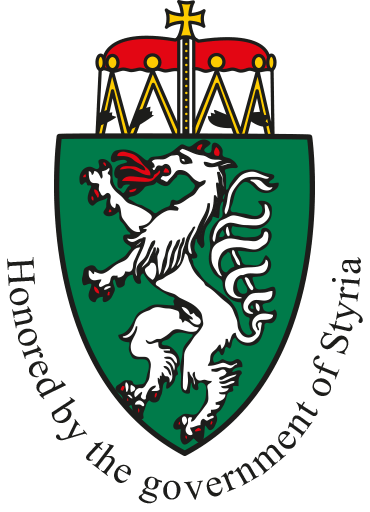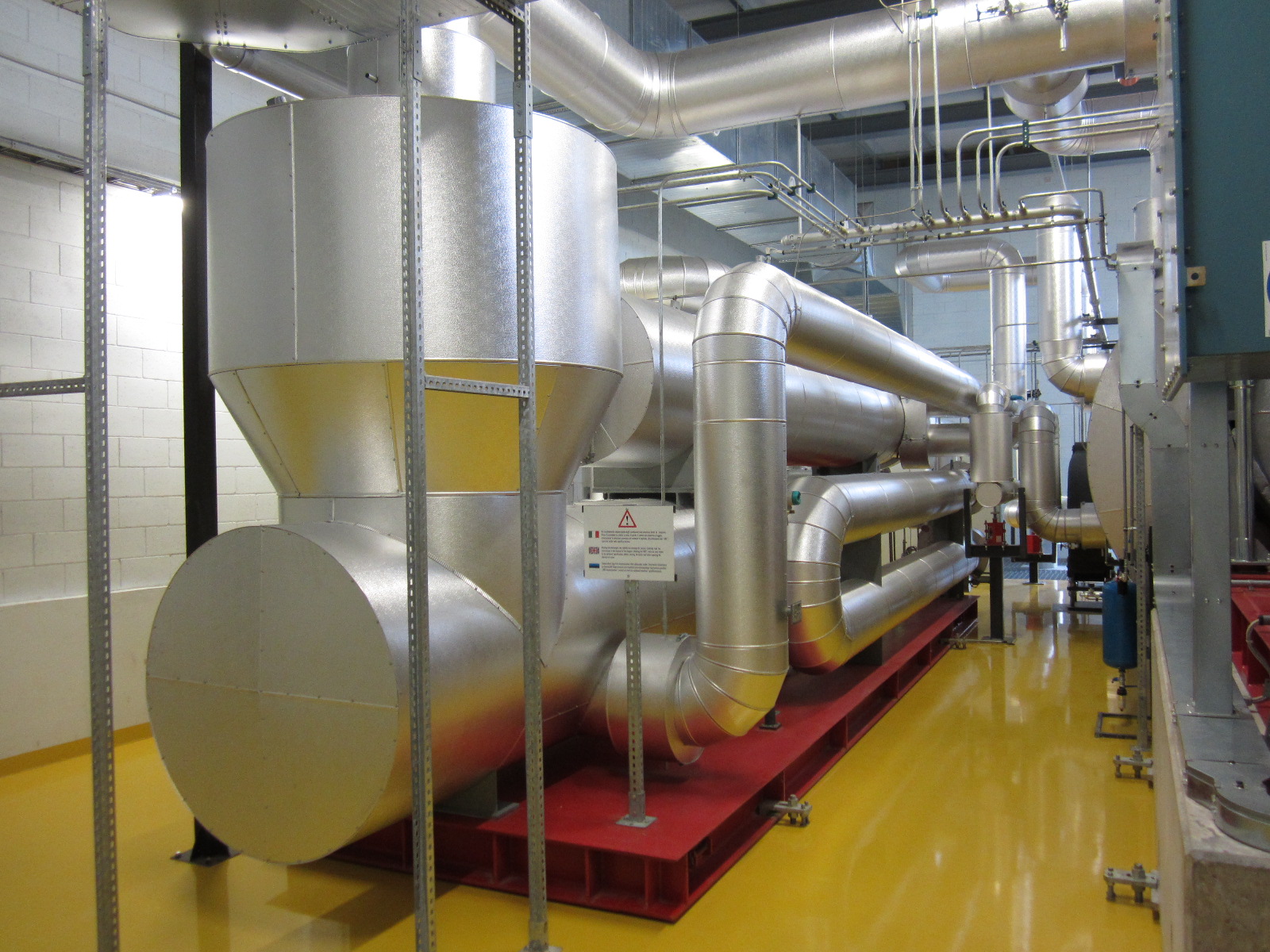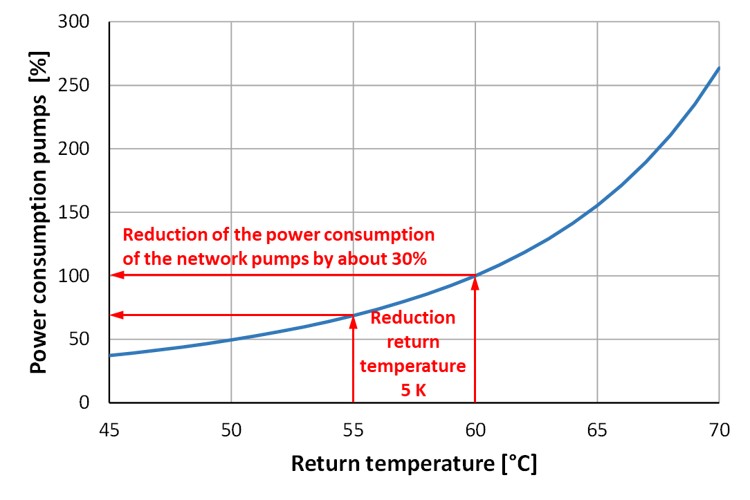

Heat recovery + efficiency improvement
Download PDF Presentation Heat Recovery+Improvement of Efficiency
Heat recovery systems and efficiency improving measures
In all sectors of everyday live the use of raw materials and energy for various applications plays a major role. The degree of efficiency within these applications is mostly defined due to historical and economic side constraints. On the one hand processes and products were developed according to the conditions given at the time of their market introduction and on the other hand the existing processes, particularly in the industrial sector, should be operated as economically as possible.
Due to the knowledge that the use of all resources is limited, the demand for products and processes which are manufactured respectively operated with low resource and energy consumption is steadily increasing within the last years. This induces the need of systems which are based on a sustainable approach.
Industrial processes and power plants often produce large amounts of unused waste heat, which is cooled off with expensive cooling units or directly exhausted. Considering continuously rising energy prices, suitable measures for the utilisation of waste heat can contribute to cost and emission reduction in industrial plants.
The efficient utilisation of waste heat reduces the CO2 emissions by substitution of fossil fuels. Moreover, valuable electric energy can be generated.
Characterisation of waste heat sources
Depending on the industrial process and power plants, different forms of waste heat at varying temperature levels are produced. Typical waste heat flows are:
- Flue gas / exhaust gas from furnaces, gas engines and post combustion units
- Exhaust air / hot air
- Pressurised hot water / hot water / waste water
- Steam / exhaust vapour
The temperature of waste heat ranges from hot flue gas streams with several hundred degrees to low temperature waste heat with 40 to 60°C.
Besides the temperature, the characteristic of waste heat flows strongly depends on the heat source and the industrial process, respectively. Therefore, a characterisation of the industrial waste heat flow (e.g. flue gas composition, dust load, steam quality, corrosion characteristics) is necessary.
The amount of waste heat available depends on the industrial process upstream the heat recovery units. Hence, significant short- and long-term load variations (night, weekend, season) are possible. When considering future measures, it is advisable to record the load profiles of relevant media or energy flows over a longer representative period (e.g. evaluation and balancing over a year on an hourly basis). The effects of planned waste heat recovery systems can thus be balanced and evaluated over the entire period investigated.

Annual load curve: evaluation and balancing of relevant energy flows on an hourly basis
The design of optimised waste heat recovery plants requires a detailed evaluation of the available waste heat sources as well as potential heat consumers within or outside (e.g. district heating systems) the manufacturing plant. Moreover, the characteristics of each heat source and heat consumer (heat transfer medium and its properties, temperature, heat capacity/demand) needs to be considered.
Power production based on waste heat and further utilisation possibilities
Depending on the waste heat capacity and temperature level available, different technologies such as the steam turbine process, the screw-type steam engine or the ORC process are applicable. Steam turbine processes are mainly suitable for power outputs > 2 MW electric and for high temperature waste heat. Screw-type steam engines are applicable for lower power outputs but require high temperature waste heat as well. The steam for the steam turbine process or the screw-type steam engine is generated in waste heat boilers. The steam produced is then used in a conventional water-steam-cycle including a steam turbine or a screw-type steam engine for the production of electric power.
The ORC process was especially developed for the power production based on low temperature heat sources such as geothermal energy, waste heat utilisation and decentralised biomass CHP plants. Thus, the ORC process is very suitable for power production based on industrial waste heat. In order to produce electricity, waste heat is transferred to a thermal oil cycle and further on to the ORC unit by heat exchangers. The ORC unit produces electric energy which can be used to cover the auxiliary power demand of the manufacturing plant or can be fed into the public grid. Additionally, the ORC unit produces low temperature heat. Depending on the site constraints of the manufacturing plant, the low temperature heat can be used as low temperature process heat (e.g. drying) or for space heating.

ORC unit: Turbine

ORC unit: evaporator (right)
Alternative possibilities of waste heat utilisation include the heat extraction from waste heat flows for the internal space and process heat supply or external heat consumers (e.g. via a district heating system).
Besides waste heat from flue gas, exhaust gas and hot water flows other heat sources such as energy from waste or exhaust steam, exhaust air from hot air and drying processes as well as heat from engine and compressor cooling can be used as heat sources for other heat consumers.
Intelligent energy master plans even allow the utilisation of low temperature waste heat. Thus, concepts such as a multiple utilisation (energy cascading) of heat, heat storage and pre-heating processes (fresh water pre-heating with waste water) are applied. Further applications include the utilisation of low temperature waste heat for cooling with absorption chillers.
An efficient way to use low temperature waste heat is as an input into heat pumps based on absorption or compression technology. Thereby, a part of the low temperature heat is lifted to a higher temperature level and thus an utilisation for process and space heating is possible. However, the remaining part of the heat which has a rather low temperature needs to be cooled off. The refrigerant used in the heat pump has a significant influence on the heat pump's performance. Due to the physical properties, the suitable refrigerant must be selected for each application and the heat pump needs to be optimized for the respective requirements of the refrigerant. Moreover, the greenhouse gas potential (GWP) and the associated legal framework conditions have to be taken into account when selecting the refrigerant.
Selection of the plant technology
The optimised selection of the plant technology for heat recovery systems and efficiency improving measures depends on the framework conditions given. Relevant parameters are:
- Waste heat source (e.g. flue gas from a biomass boilers, flue gas from an industrial furnace, …)
- Type of fuel used (e.g. bark, waste wood, natural gas, …)
- Temperature levels of the heat sink (e.g. return temperatures of 50°C from district heating network or 85°C from drying kilns)
- Availability of heat sources and heat sinks
- Economic parameters (e.g. heat price, electricity price, fuel prices, …)

Deposit on economiser tubes

Corrosion on economiser tubes
The avoidance of problems or damages by corrosion, abrasion and deposits is an essential criterion. Therefore the knowledge of exhaust gas parameters such as
- flue gas temperature
- surface temperature of the heat exchanger
- flue gas composition
- water and acid dew point
- content and composition of dust
- hygroscopic salts
and the expert knowledge concerning the evaluation of these exhaust gas parameters is essential. This has a relevant influence on the selection of
- the process and its parameters,
- the materials used,
- the cleaning systems and
- the waste water treatment systems.
Appropriate measurements can for instance be carried out with an online low-temperature corrosion probe to reduce the risk of corrosion damage, especially of processes that are not well known.

Corrosion sensor of a low-temperature corrosion probe with three measuring electrodes
By stepwisely cooling the measuring probe, relevant temperature ranges can be evaluated and the corrosion rates occuring can be recorded online. By these means it is possible to determine the acid dew point of gases and the influence of hygroscopic salts (deliquescence corrosion). The influence of different fuels and operating conditions on the corrosion rate can be examined and the definition of appropriate materials and operating parameters can be supported.
Efficiency improvement by optimisation of hydronic circuits of heat consumers
The heat recovered in heat recovery systems can often be used to supply district heating networks. The implementation of optimisation measures to lower the district heating return temperature of district heat consumers is an effective measure to increase the efficiency of the entire system.
Such optimisation measures are able to:
- create additional potentials for the connection of new heat consumers
- reduce the electricity consumption of the network pumps
- reduce the heat losses of the district heating network
- create better possibilities for heat recovery
- increase the capacity of heat storage tanks and consequently reduce the operating time of peak load boilers.

Example for the power consumption of the network pumps in dependence of the return temperature
The cooperation of operators of district heating networks with heat consumers, installers and hydronic engineers can lead to a win-win situation for all parties involved.
BIOS is able to support the realisation of heat recovery and efficiency improvement measures in all relevant fields addressed.
Implementation of the concepts developed
Based on the concepts developed and the principle decision by the responsible persons (e.g. management within a company, council within a community) a master plan for the implementation of the measures proposed as well as the detailed realization will follow.
BIOS BIOENERGIESYSTEME GmbH creates not only the concepts described above but also plans and manages the full implementation of the project.
A particular strength of BIOS is the constant consideration of the long-term economic impact of measures and future developments within the system boundaries (e.g. network extensions etc.) which already takes place in the planning stage in order to make sure that the best possible solution for the client will be identified.
Field of application
Waste heat utilisation systems and concepts for improving the energy efficiency are especially relevant for industrial processes with high heat demands. This includes the following industry sectors:
- Iron and steel industry
- Cement and building material industry
- Food and beverage processing industry
- Pulp and paper industry
- Chemical industry
- Petroleum industry
Additionally owners of district heating systems play a relevant role as potential waste heat consumers.
